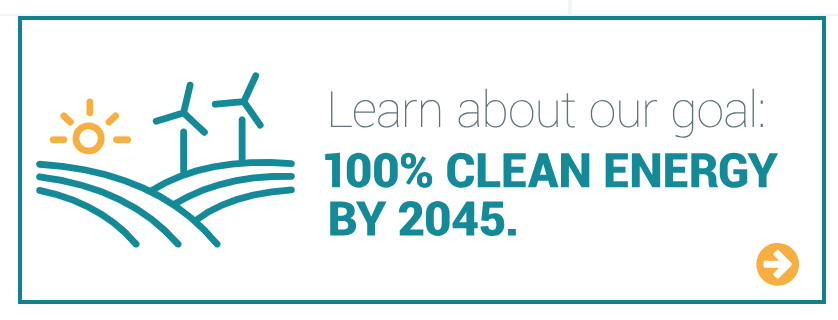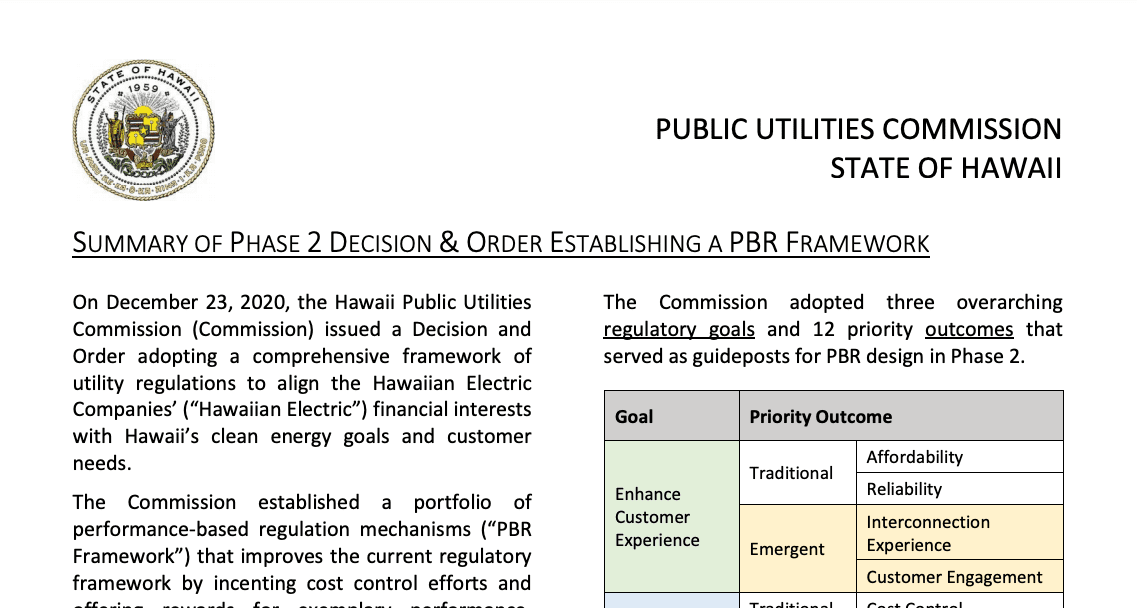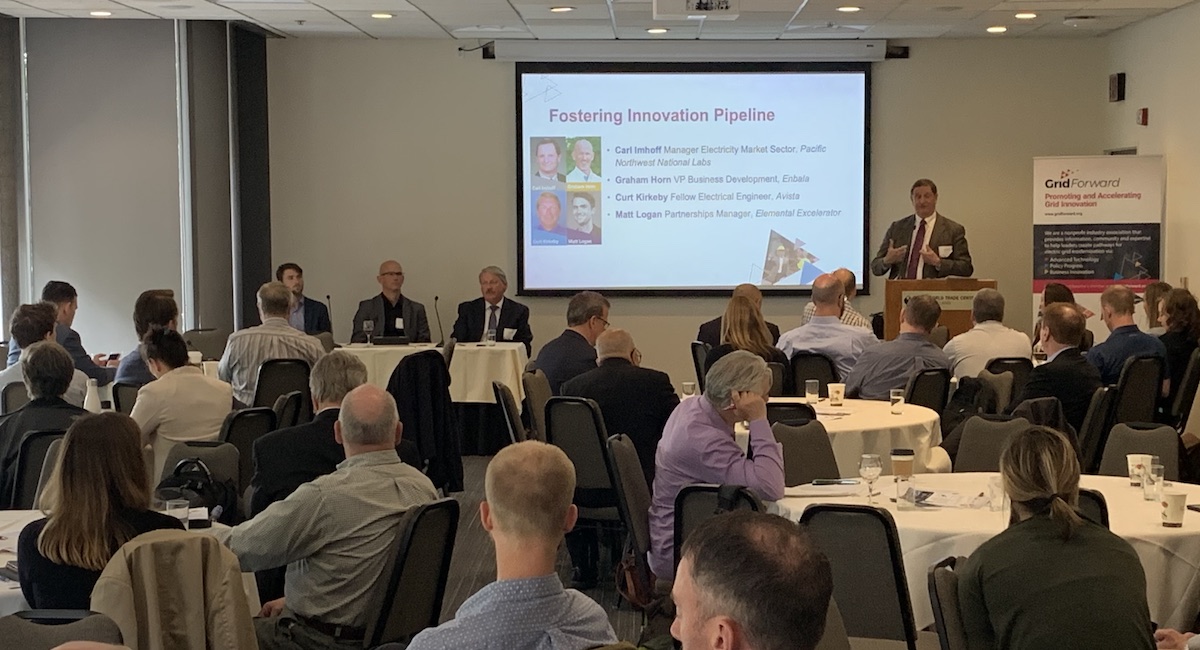 Idaho Power recently announced an ambitious goal to provide 100-percent clean energy by 2045. In addition to its hydropower facilities, which typically meet almost half its customers’ energy demands, Idaho Power is planning additional investments in wind, solar and other clean generation sources. For a broader understanding of the utility’s clean power plans, we put a few questions to Lisa Grow, Senior Vice President and Chief Operating Officer at Idaho Power.
Idaho Power recently announced an ambitious goal to provide 100-percent clean energy by 2045. In addition to its hydropower facilities, which typically meet almost half its customers’ energy demands, Idaho Power is planning additional investments in wind, solar and other clean generation sources. For a broader understanding of the utility’s clean power plans, we put a few questions to Lisa Grow, Senior Vice President and Chief Operating Officer at Idaho Power.
There was no government mandate compelling us to go 100% clean. Rather, our company felt it was the right thing to do.” – Lisa Grow, Senior Vice President and Chief Operating Officer, Idaho Power
David Smith, Smart Grid NW: Can you share a bit about what your customer interest for clean energy looks like? Are there any ways you are looking to provide solutions for them that differ from the relationship over the last decades?
Lisa Grow, Idaho Power: Clean energy is something our customers are increasingly interested in and asking for. We conducted a recent survey that showed clean energy is important to customers—enough so that many said they would be willing to pay a little more for it. For years, Idaho Power has offered energy efficiency programs and incentives, a Green Power program, customer generation (interconnection) and other options for customers who wanted clean energy. With this new goal, the company looks forward to finding new and innovative ways to bring clean energy that is affordable and reliable to more customers than ever before—with the Jackpot Holdings solar agreement standing out as one recent, noteworthy example.
David: Grid updates are a necessary platform for effective integration of renewables. Can you give us an overview of where you plan to invest in grid modernization?
Lisa: Idaho Power’s energy grid is becoming smarter all the time. Joining the western Energy Imbalance Market has enhanced our ability to buy and sell energy across the West in real time. Our two ongoing transmission projects to build the Gateway West and Boardman to Hemingway lines will give us new, efficient ways to import and export energy throughout the Northwest. And as we constantly work to update and strengthen our grid, Idaho Power seeks to use the most efficient, modern technologies that will allow us to continue to adapt and integrate clean energy in the future.
David: Efficient management of the system is another pillar for effective deep decarbonization efforts. Will you be ramping up energy efficiency (EE) programs? Other customer-facing programs like demand response? And areas to increase the utilization of infrastructure?
Lisa: Energy efficiency and demand response programs have long been a staple of Idaho Power’s decarbonization efforts. We are required by the Idaho PUC to implement all cost-effective energy efficiency and we include EE/DR in our long-term resource planning. In 2018, Idaho Power’s energy efficiency programs saved an incremental 183,378 megawatt hours — enough to power almost 16,000 average-sized homes for an entire year. Our company also awarded more than $25 million in incentives to customers who participated in energy efficiency or demand response programs. As we move toward 100% clean energy, we see energy efficiency and demand response playing a significant role. Efficient utilization of infrastructure is also important—in that regard, we have already seen benefits of joining the western Energy Imbalance Market in April of 2018. Transmission will also play a key role as the addition of the Boardman to Hemingway and Gateway West lines allow us to quickly and easily import and export clean energy throughout the Northwest when and where it is needed most.

David: Idaho Power already plans to buy up to 120 MW of solar power from a generation facility to be built south of Twin Falls. Are there other renewables projects in mind?
Lisa: We have dozens of active PURPA and non-PURPA contracts for purchasing clean energy—nearly 20 percent of our energy mix came from purchased wind, solar and other clean sources in 2018. Currently, Idaho Power sells the Renewable Energy Credits (RECs) from those purchases for the financial benefit of our customers. However, the Jackpot Holdings solar agreement represents a different kind of clean energy contract, and we are very excited to add that solar energy to our mix at one of the most affordable prices on record for a public utility in the U.S. Going forward, the company will continue to seek opportunities to add clean, cost-effective resources to our mix, whether through purchase agreements, new technologies or other innovative ways that advance our 100% goal, as guided by our Integrated Resource Plan.
David: Energy storage technology can play an important part of the picture for effectively navigating high renewable portfolios. What role do you anticipate it will play?
Lisa: One of the noteworthy aspects of our goal is that is aspirational. What we mean by that is while we fully intend to achieve 100% clean energy by 2045, there are unknown factors we believe will contribute to the goal moving forward. We believe technology is going to advance in ways that make it more economically and operationally feasible to add clean energy to our system. And we would put storage technology very high on that list. It will almost certainly play a role in how we, and other utilities, phase out carbon-emitting resources and replace them with cleaner energy. Exactly how and when that happens remains to be seen, but it’s something we keep a close eye on in terms of where storage technology is and how we can make it cost-effective —and, in turn, increase the cost-effectiveness of other clean sources like solar and wind.
One of the noteworthy aspects of our goal is that is aspirational. What we mean by that is while we fully intend to achieve 100% clean energy by 2045, there are unknown factors we believe will contribute to the goal moving forward.” – Lisa Grow
David: Gov. Brad Little and Boise mayor David Bieter are quoted in the announcement. What role did state and local governments play in helping to set this course to a clean energy future? Will you be partnering with them and others in the community on initiatives?
Lisa: Idaho Power created this goal in part by engaging with our customers — and the State of Idaho and City of Boise are two of our largest. But there was no government mandate compelling us to go 100% clean. Rather, our company felt it was the right thing to do, blending the environmental stewardship of Idaho Power’s 100-year history with the best interests of our customers. We certainly value the support we have received from our local and state representatives. The City of Boise has been a great partner to Idaho Power, and we are excited to move forward together to see how our 100% clean goal aligns with the city’s own clean energy initiatives. Since our announcement, we have seen almost universally positive feedback from Gov. Little, from officials in Boise and other cities, from local and regional conservation groups and from customers. Given the political climate of our region and the lack of a formal renewable portfolio standard in Idaho, we think it’s a remarkably positive sign that people are rallying around this goal and seeking ways we can all work together to achieve it.



